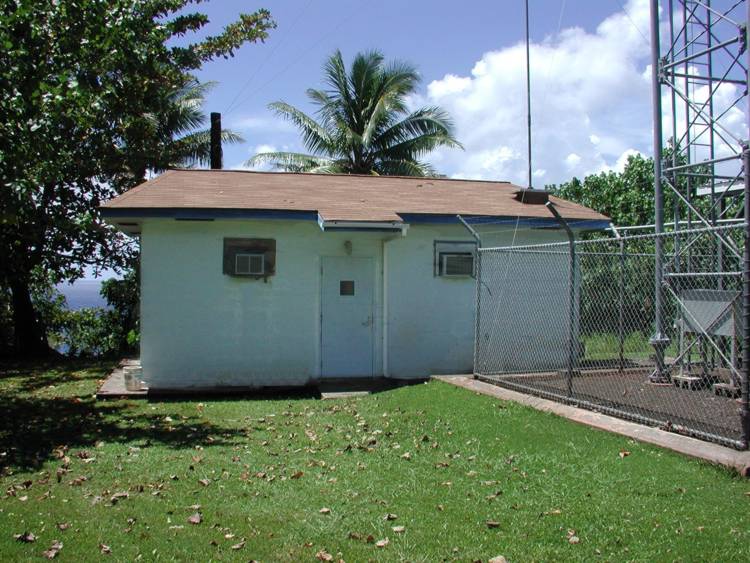American Samoa Observatory
Tour
Around the Grounds: Hudson Building

The Hudson Building was completed December 1996.
It currently houses the GMD Chromatograph for Atmospheric Trace Species (CATS)
and the cooperative Advanced Global Atmospheric Gases Experiment (AGAGE) instruments
for halocarbons, the Pollak for aerosols, the Dasibi and TEI monitoring surface
ozone. The building is divided into three rooms. One contains an air compressor,
the other two instruments. To see inside the Hudson Building continue down the
page. (Photo by P. Roberts)
 |
The NOAA ESRL/GMD CATS instrument. A four channel automated GC that runs 24
hours a day, 7 days a week. The instrument is currently operated to detect
14 species of halocarbons targetted specifically as climate forcing agents.
For more information see (INSERT HATS PAGE HERE) |
 |
The cooperative AGAGE instrument. This GC also operates 24 hours a day,
7 days a week targeting similar species. The two systems are part of a scientific
comparison. |
 |
Along with the CATS instrument are the TEI, surface ozone instrument,
seen in the rack next to the gas cylinders, and the Pollak, aerosol monitor,
to the left of the TEI. The black unit seen against the left wall is the
pumping unit for Scripps Institute of Oceanography.for O2 flask monitoring. |
Areas to visit:
[Samoa Home] [Observatory]
[Hudson Building] [Observatory Rooftop] [Bluesky
Tower] [Stairway & Point]




